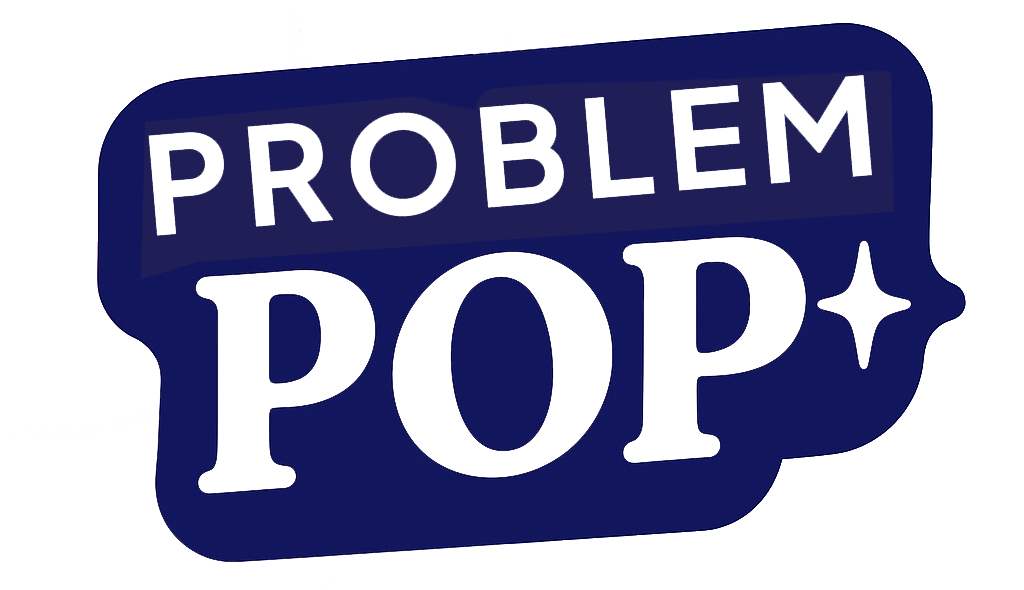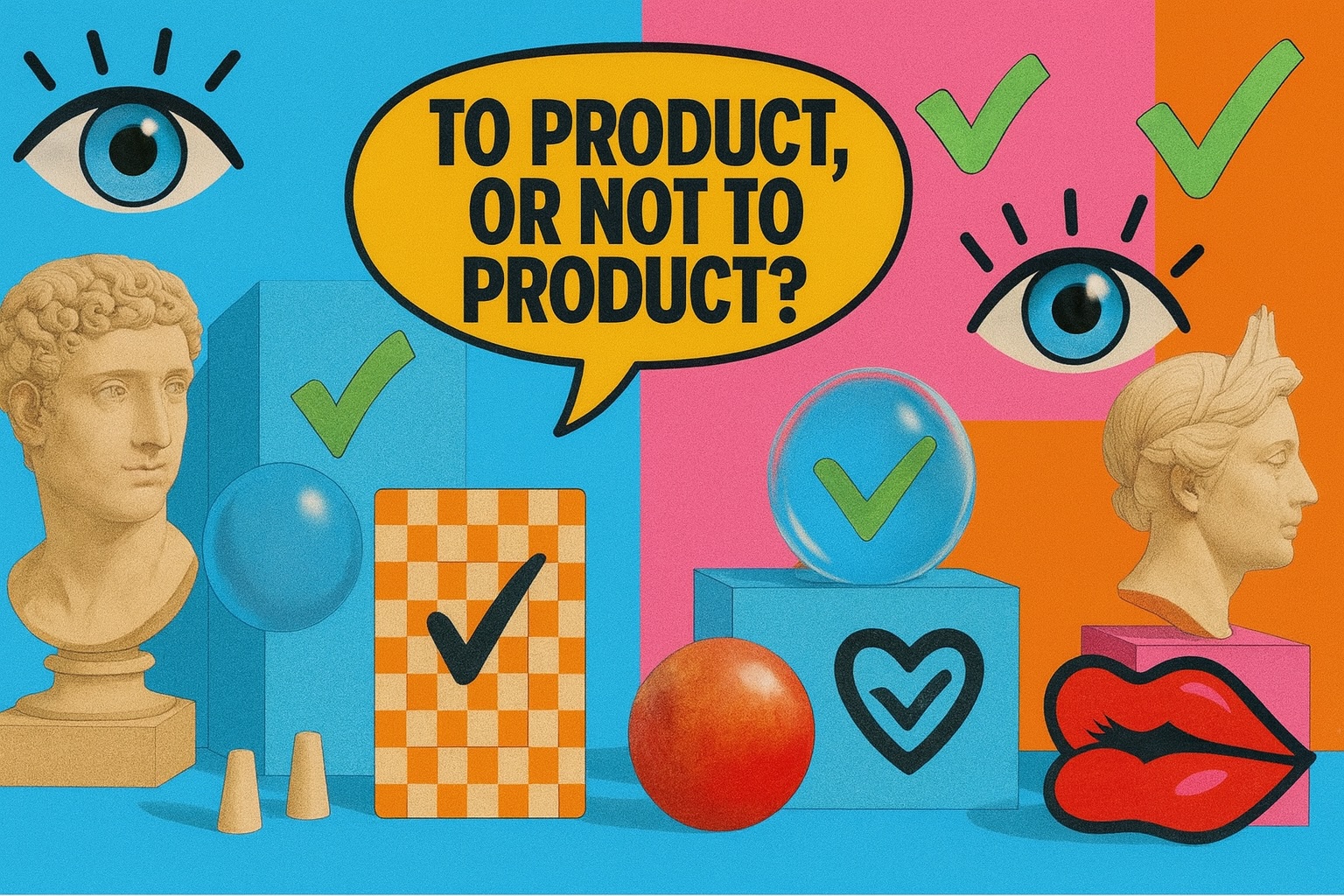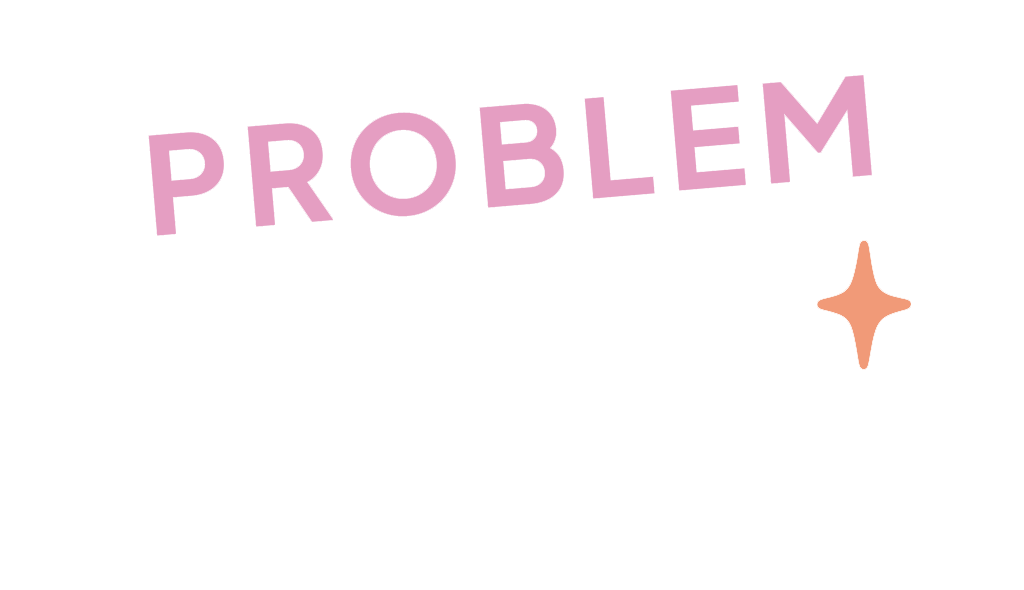The "Job to be Done" Framework: What Are Customers Really Hiring Your Product For?
Your customers aren't buying your product—they're hiring it to do a job. And just like that mate who calls you only when they need help moving house, they'll drop you the moment someone better comes along.
When "Just Solving a Problem" Isn't Enough: Why Customers Really Hire Your Product
Let's be honest. When someone buys your product, they're not just buying a "thing" – they're hiring it to perform a job in their life. And that job is rarely what you think it is. (Is anyone actually buying a drill because they want a drill? No, they want the bloody hole, or more accurately, they want to hang the picture that makes their partner think they've finally got their life together.)
After watching my luxury candle business go up in flames (not literally, though that would have been ironically on-brand), I became obsessed with understanding why people actually buy what they buy. The Jobs to be Done framework answered questions I didn't even know I should be asking.
The "Jobs Theory" Isn't Just Another Business Buzzword (I Promise)
Clayton Christensen's Jobs to be Done theory sounds suspiciously like consultant-speak at first glance. But unlike most business frameworks that collapse under the weight of reality, this one actually holds up.
The core premise is beautifully simple: people "hire" products to do specific jobs in their lives. They're not buying features or even benefits – they're buying progress from a current situation to a desired one.
Take my failed candle business. I thought customers were "hiring" my overpriced wax for the practical job of "making rooms smell nice." But my most loyal customers were actually hiring them for entirely different jobs: "creating a sense of luxury in my ordinary flat," "signalling to guests that I have taste," or "creating a ritual that helps me transition from work mode to relaxation." If I'd understood that earlier, perhaps I'd still be selling fancy-smelling wax at a 400% markup.
The brilliance of Jobs Theory is that it forces you to look past the functional aspects of your product to the emotional and social dimensions. And those, my friend, are where the real buying decisions happen.
Uncovering the Job Your Product Is Really Hired For
The most fascinating jobs are usually unspoken. Your customers might not even be consciously aware of them. That's why asking "why do you use our product?" often yields such useless answers.
Think about McDonald's milkshakes. When McDonald's wanted to improve milkshake sales, they initially focused on taste, thickness, and price – all the obvious product attributes. But when they looked at the job people were hiring milkshakes for, they discovered something surprising: many customers bought them in the morning as a one-handed breakfast they could consume during their commute that would keep them full until lunch. The competing products weren't other milkshakes; they were bananas, bagels, and breakfast bars.
Here's how to dig beyond the surface to find the real jobs:
- Watch what people do, not just what they say. The context of purchase often reveals more than direct questions.
- Look for workarounds and compensating behaviours – they signal unmet needs.
- Identify the "hiring" and "firing" moments – what triggers someone to adopt your solution, and what causes them to abandon it?
- Pay attention to surprising uses of your product – they often reveal jobs you never imagined.
- Ask "what progress is this person trying to make?" rather than "what features do they want?"
When I finally spoke to my most loyal candle customers (after sales had already started to plummet – brilliant timing on my part), I discovered they weren't comparing my products to other candles but to entirely different luxury experiences. They weren't buying a scent; they were buying a moment of sophisticated calm in their chaotic lives.
Jobs to be Done in Practice: Beyond the Theory
The JTBD framework sounds lovely in theory, but how do you actually apply it without disappearing into a philosophical rabbit hole about the nature of consumer desire? (Although after a few glasses of wine, that conversation can be quite entertaining.)
Let's look at some real-world applications:
The Classic Milkshake Example
McDonald's discovered commuters were hiring milkshakes to: 1) occupy them during a boring commute, 2) stave off hunger until lunch, and 3) be consumed with one hand while driving. They adjusted thickness, added mix-ins for interest, and marketed to morning commuters – boosting sales dramatically.
The Dating App Reality
Dating apps might seem to be hired for "finding love," but many users are actually hiring them for: validation, entertainment during boring moments, practice flirting with low stakes, or even just curiosity about who's single in their area. The apps that understand these diverse jobs create features that satisfy them all, not just the "match with soulmate" job.
The Ikea Paradox
Ikea furniture isn't just hired to "furnish rooms affordably." It's often hired to give people the satisfaction of having built something themselves, to provide an activity for couples to do together (or fight over, as the case may be), or to offer a low-commitment solution for temporary living situations. The assembly process that many see as a bug is actually a feature for the "accomplishment" job.
Turning JTBD Insights Into Product Decisions
Understanding the job is only half the battle. The real challenge is reshaping your product, marketing, and entire business model around it. This is where I spectacularly failed with my candle business, continuing to focus on scent profiles when I should have been selling rituals and moments.
Research shows that companies with strong ideal customer profiles achieve 68% higher win rates, precisely because they understand the specific jobs their customers are hiring them to do. When you're clear on the job, you can dramatically improve your targeting and messaging.
Here's how to actually use these insights:
- Reshape your value proposition around the real job, not the assumed one.
- Redefine your competition based on alternative ways customers solve the same job.
- Redesign your customer experience to focus on the moments that matter in the job journey.
- Rethink your pricing based on the value of the progress, not the cost of your product.
- Reorganise your marketing to speak directly to the job, often using the customer's own language.
When Snickers repositioned from being a chocolate bar to being a hunger solution ("You're not you when you're hungry"), they weren't just being clever – they were speaking directly to the job their product was being hired to do. They expanded their relevant occasions from "dessert time" to "anytime you need to function but haven't eaten."
And let's be honest – isn't your product also trying to solve some fundamental human need? (Even if that need is just "appear marginally more interesting at dinner parties by having something witty to say about NFTs.")
When You've Been Solving the Wrong Problem All Along
The most painful JTBD revelation comes when you realise you've built your entire business around the wrong job. I've been there, staring at warehouses of luxury candles that weren't actually competing with other candles but with yoga classes and bubble baths for the "self-care" job.
Understanding the four main categories of customer pain points – service, product, process, and emotional – can help you identify when you're addressing the wrong job entirely. Often, what appears to be a product issue is actually an emotional or process problem that your customers are desperately trying to solve.
Signs you might be solving the wrong problem:
- Your conversion rates are decent, but retention is abysmal.
- Customers use your product, but not in the way you expected.
- You keep adding features that excite your team but bore your users.
- Your most satisfied customers are often not your target audience.
- You're winning on product specs but losing on emotional connection.
The beauty of the JTBD framework is that it can help you course-correct before you burn through all your capital (or in my case, after you've already burned through it, leaving you with valuable "lessons" instead of a viable business).
Remember Kodak? They thought they were in the film business when they were actually in the memory preservation business. When digital cameras emerged, they failed to see that the job – preserving memories – could be done better with a new solution. They focused on the product rather than the progress customers were trying to make.
And you're likely making the same mistake right now with your product. (Sorry, but it's statistically probable.)
Putting It All Together: Your JTBD Action Plan
If you're still reading and haven't been triggered into an existential business crisis, congratulations. Now let's turn this theory into something practical:
The most effective customer research often comes from having longer, unstructured conversations with customers, rather than standard 15-minute interviews. One founder discovered that a single 2-hour conversation revealed that time management is an "emotionally-invested process" reflecting personal values – an insight that completely changed their product roadmap.
- Interview customers about their decision journey – not about your product features but about the circumstances that led them to seek a solution.
- Create job stories instead of user stories: "When I [situation], I want to [motivation], so I can [expected outcome]."
- Map the emotional timeline of your customer's experience, from first consideration to post-purchase.
- Identify competing solutions for the same job, even if they look nothing like your product.
- Restructure your onboarding to align with the real job customers are hiring your product to do.
For deeper insights into customer behavior patterns, consider conducting diary studies over several weeks, which capture how user attitudes and habits evolve naturally over time. Unlike one-off interviews, these studies reveal the emotional journey customers experience while trying to make progress on their jobs.
The JTBD framework isn't just about understanding your current customers better – it's about expanding your vision of who your customers could be. When you define your market by jobs rather than demographics or product categories, you often discover it's much larger (or occasionally much smaller) than you thought.
And as someone who once tried to expand a luxury candle business by creating more scent variations rather than leaning into the real jobs being done, trust me when I say: understanding the true job can be the difference between scaling and failing.
The Final, Uncomfortable Truth About Jobs to be Done
The most powerful insight from Jobs Theory is also the most uncomfortable: your product is ultimately just a temporary solution to a job that might someday be done better by something else entirely.
Your job as a founder isn't to protect your current solution; it's to deeply understand the progress your customers are trying to make and continually evolve how you help them make it.
This is particularly challenging because every product in tech becomes obsolete quickly, requiring constant innovation. The most successful companies become distribution-centric rather than product-centric, focusing on the relationship with customers and their evolving needs rather than falling in love with a particular solution.
Blockbuster wasn't in the DVD rental business; they were in the home entertainment business. Taxicabs weren't in the taxi business; they were in the "get me from A to B" business. My candles weren't in the home fragrance business; they were in the "make me feel like I've got my life together for at least 30 minutes" business.
The most successful companies aren't those that build the best products – they're those that understand the jobs to be done so deeply that they can evolve their solutions as technology, culture, and customer needs change.
In the end, Jobs to be Done isn't just a framework for understanding your customers better – it's a philosophical stance about what business you're really in. And if you're willing to let go of your attachment to your current solution, it might just save you from the fate of my candle business: creating a beautiful product that ultimately nobody needed to hire.






